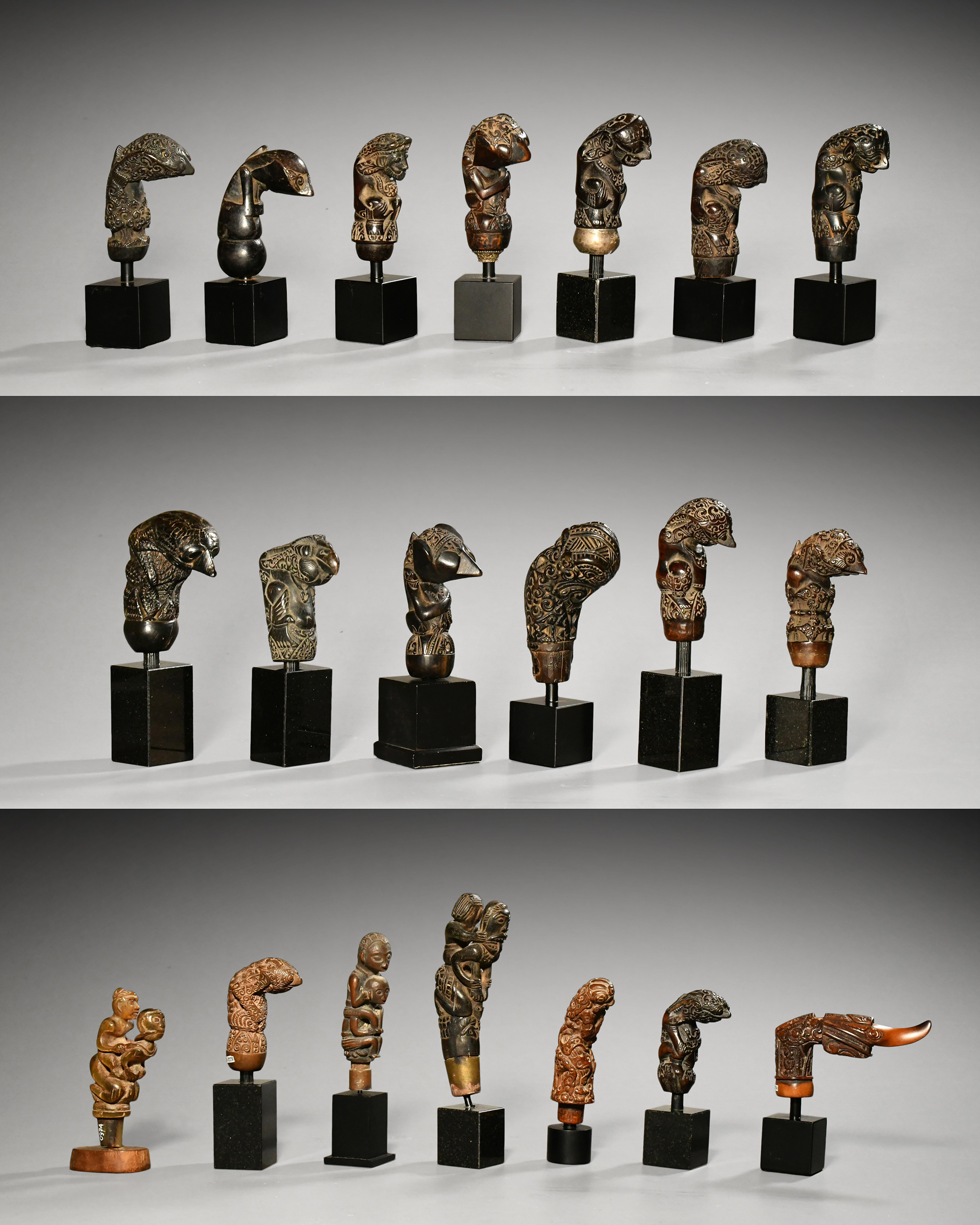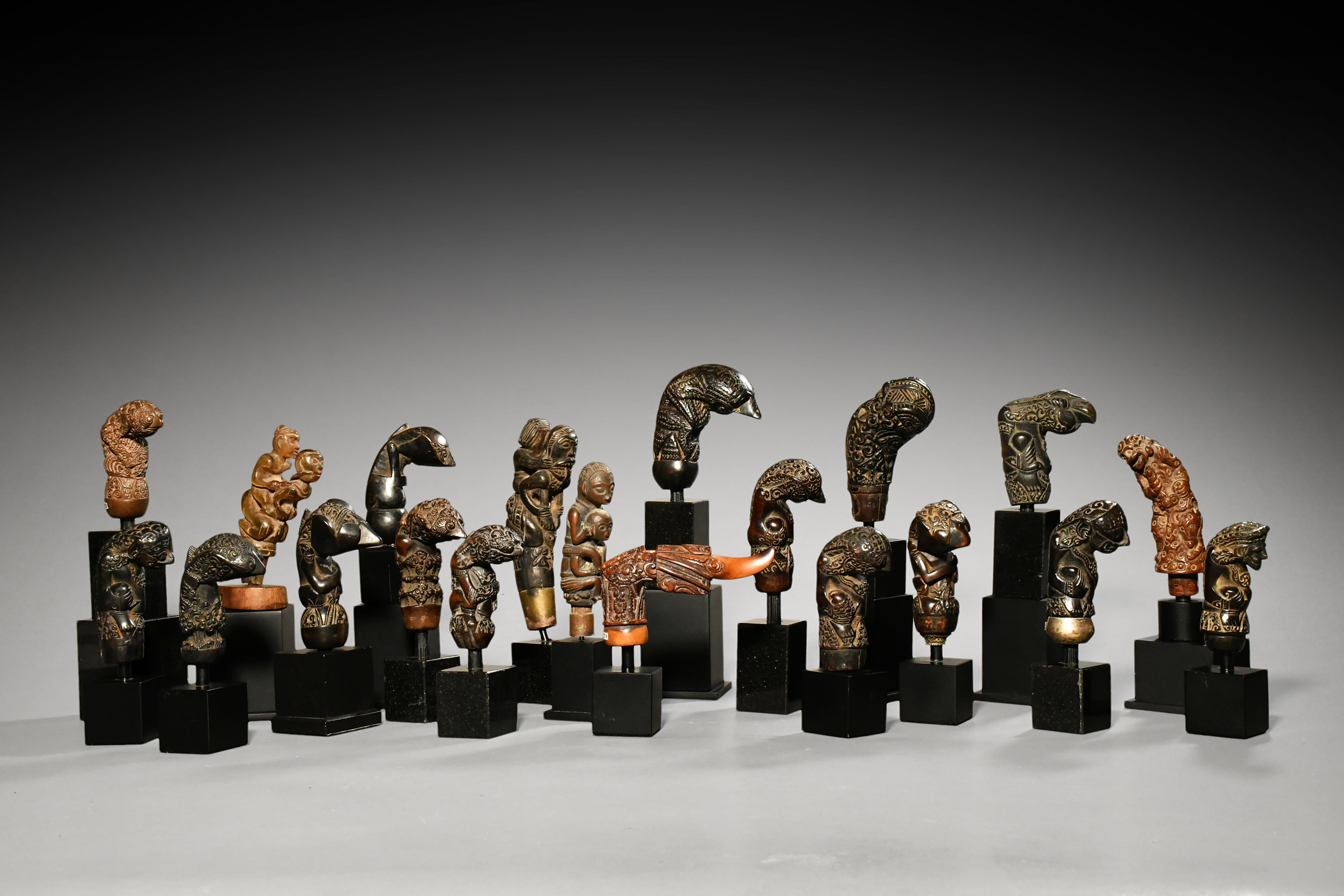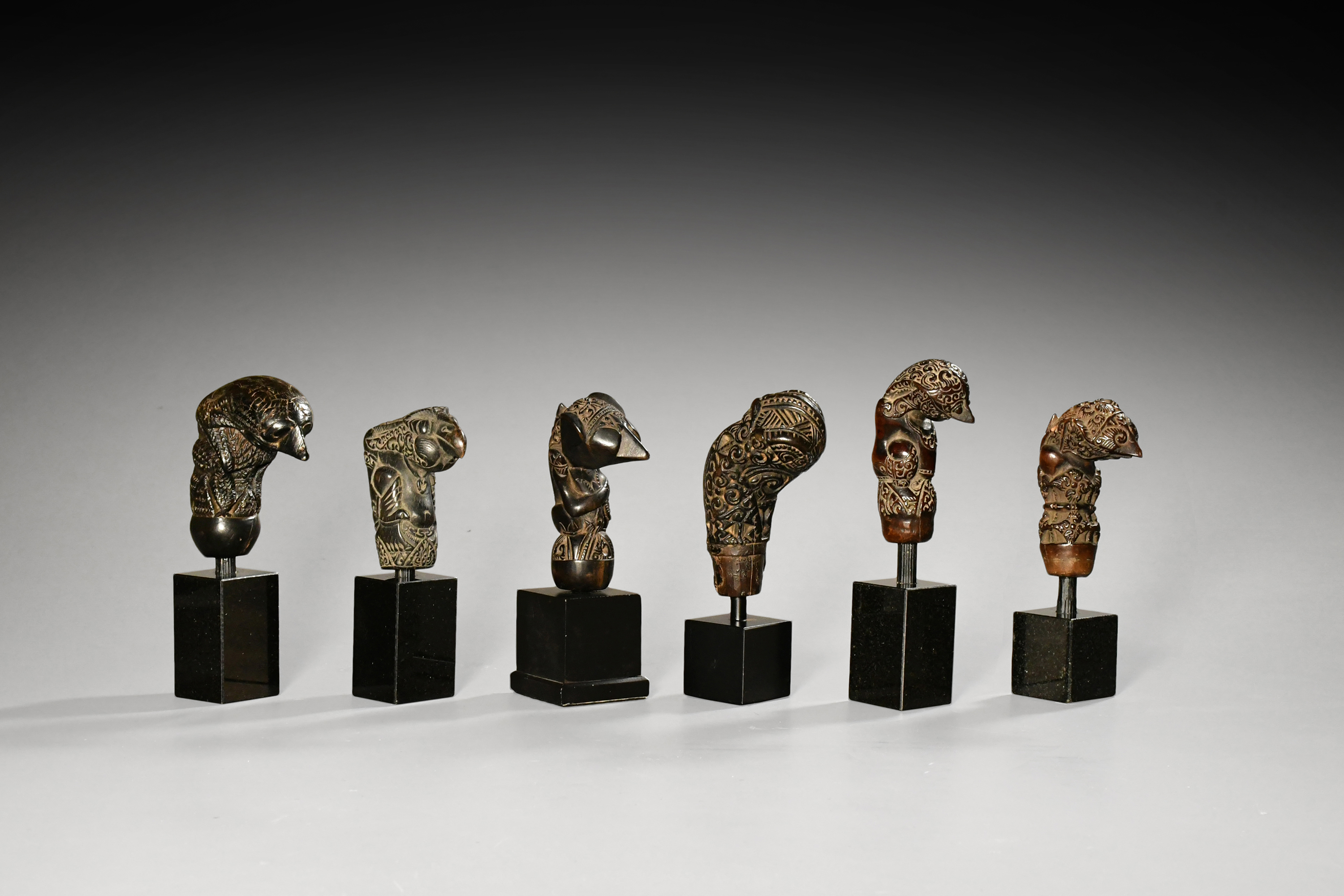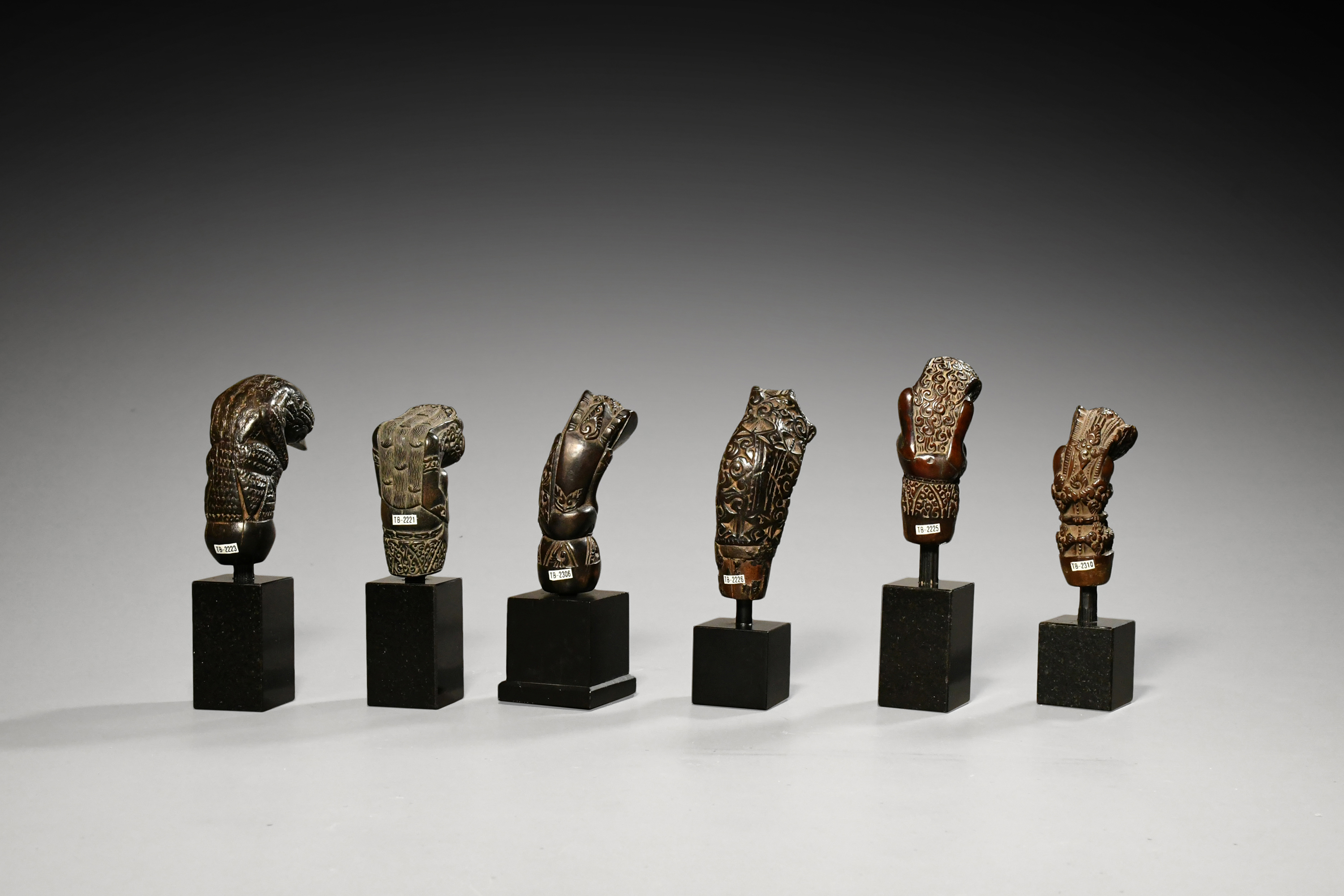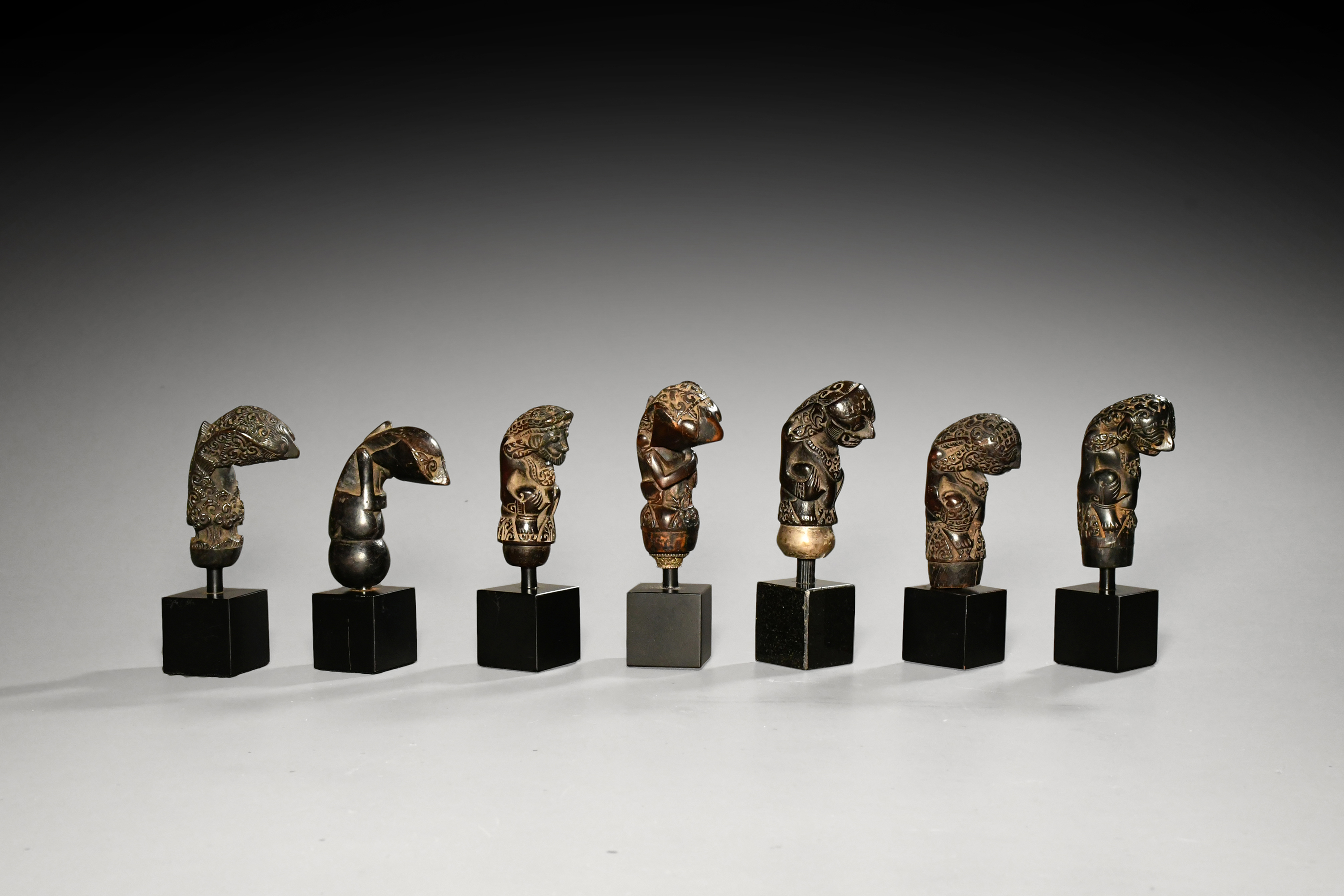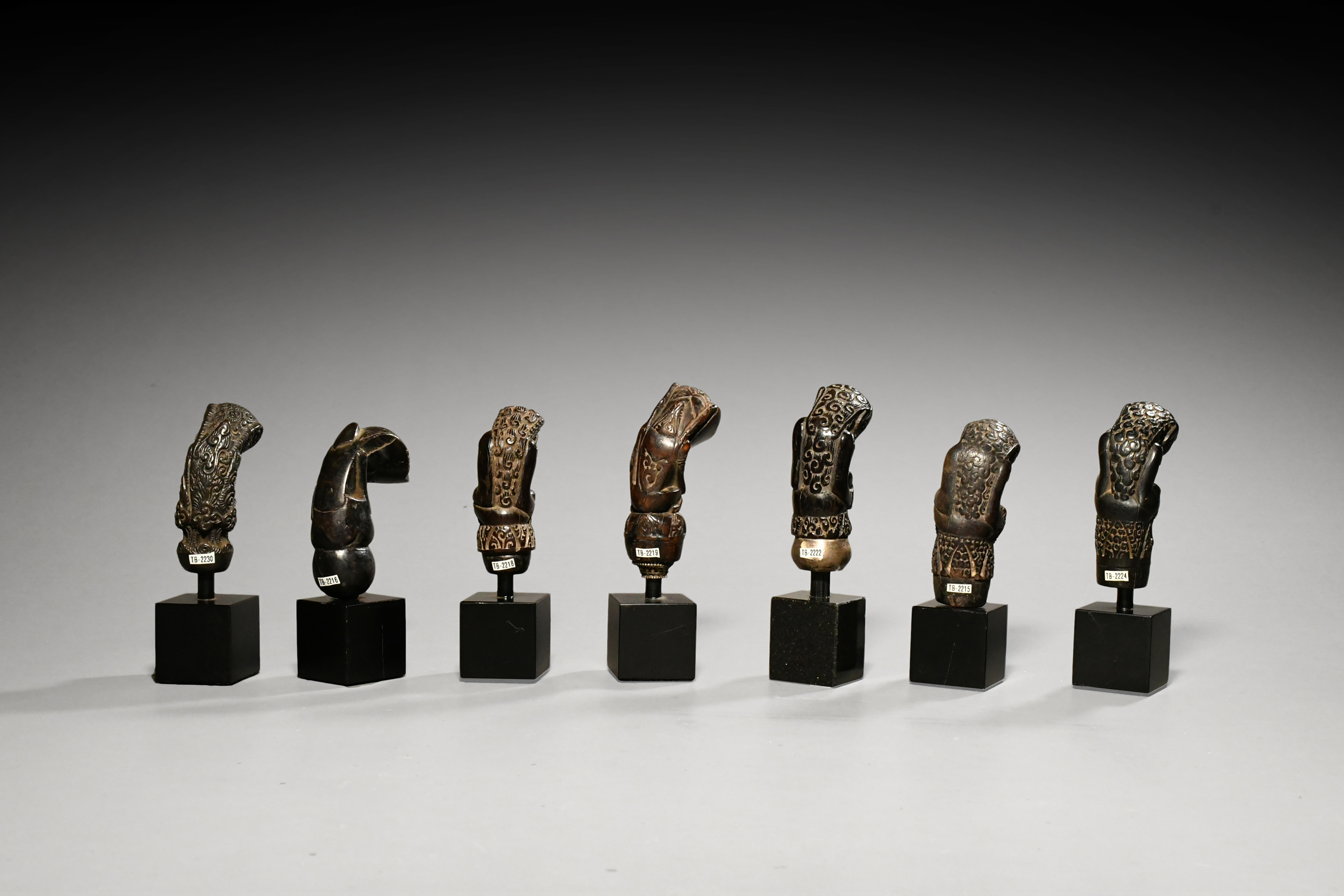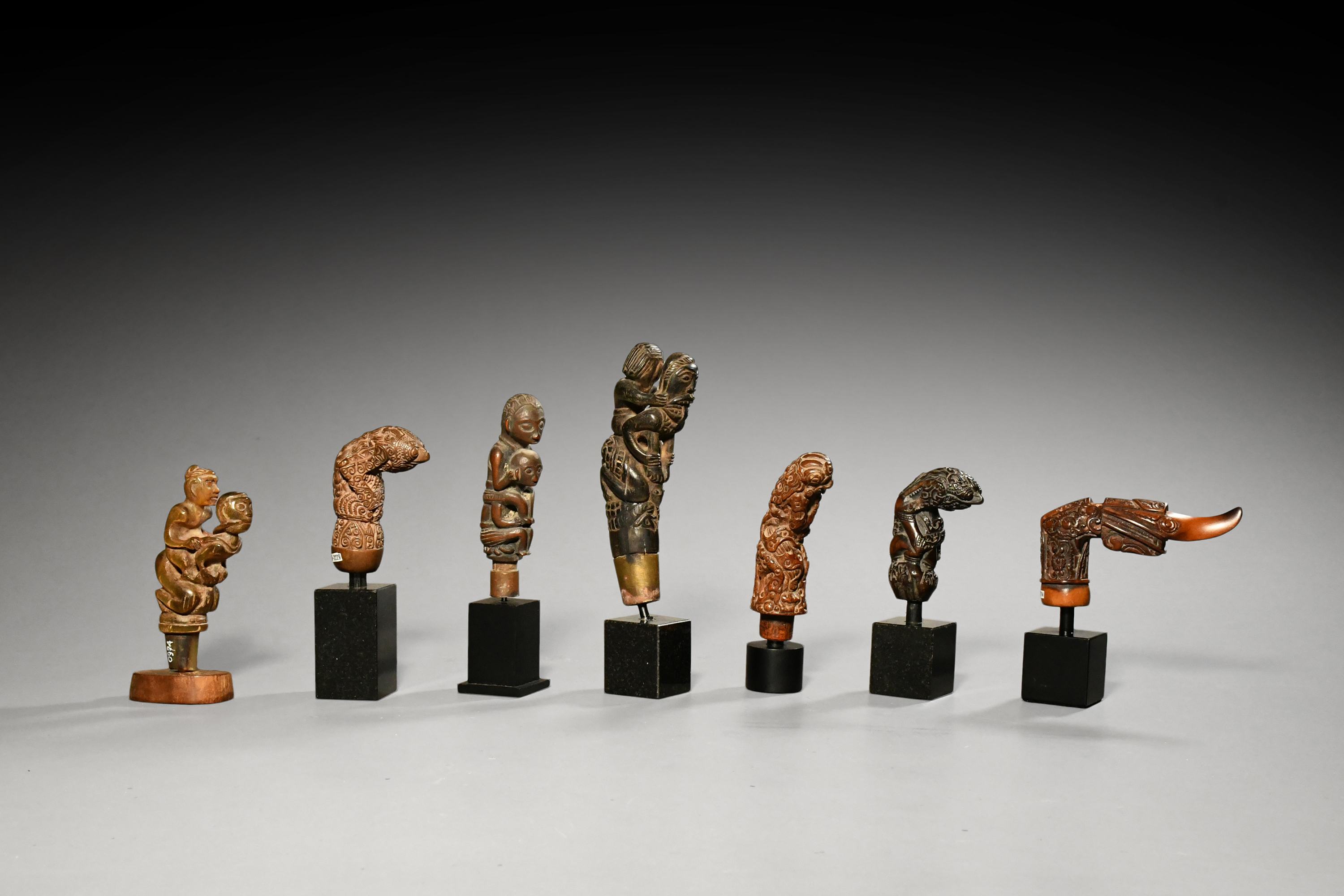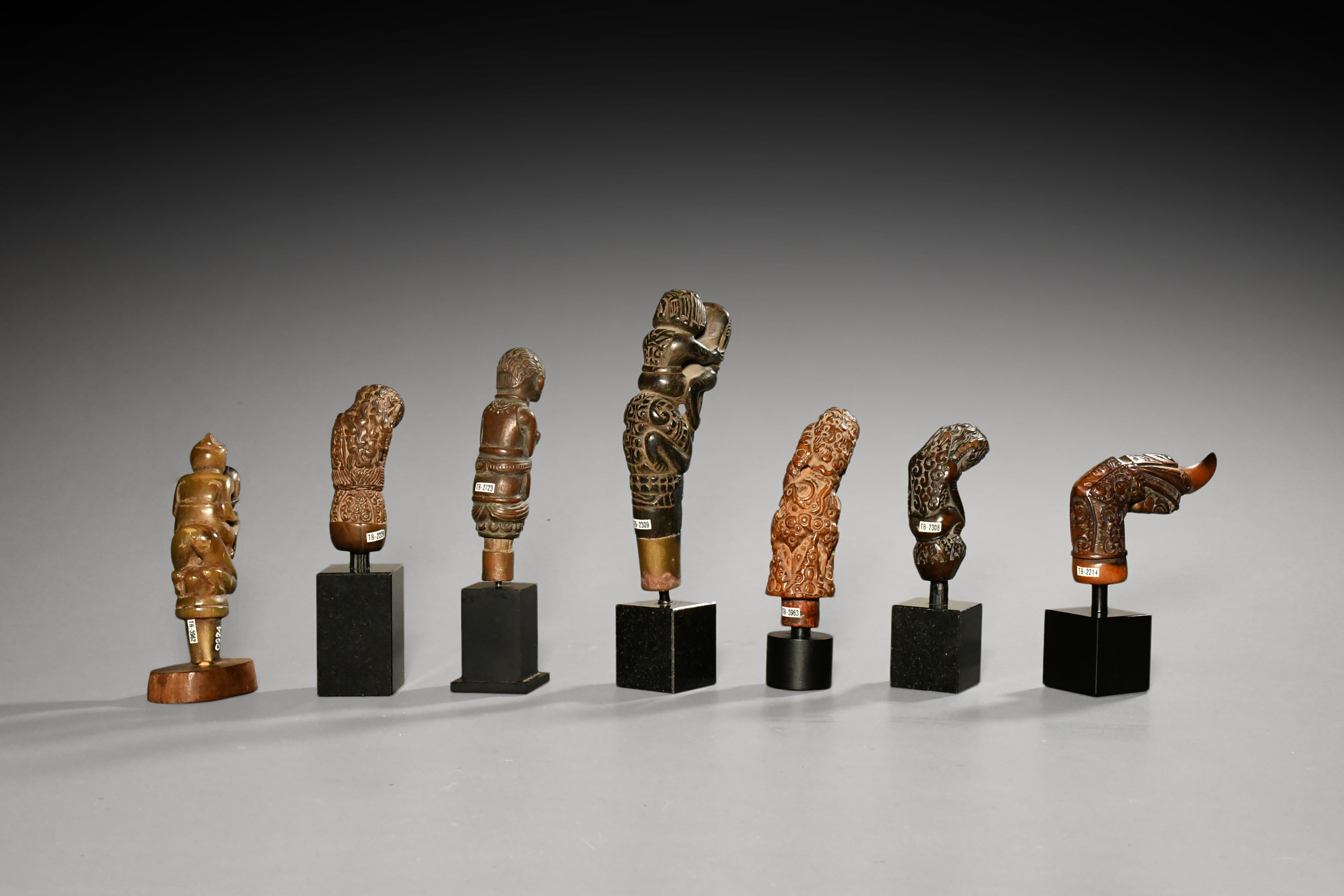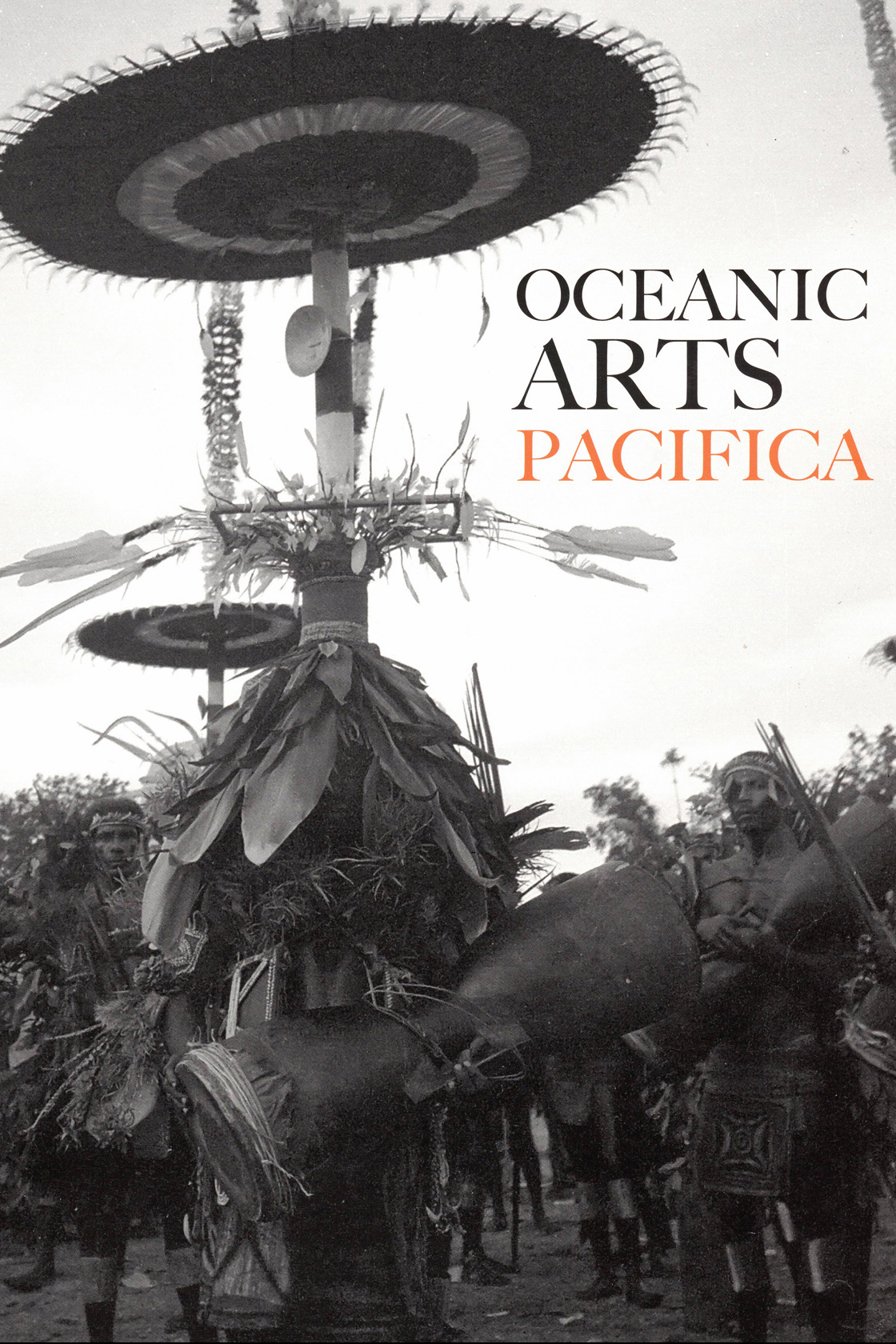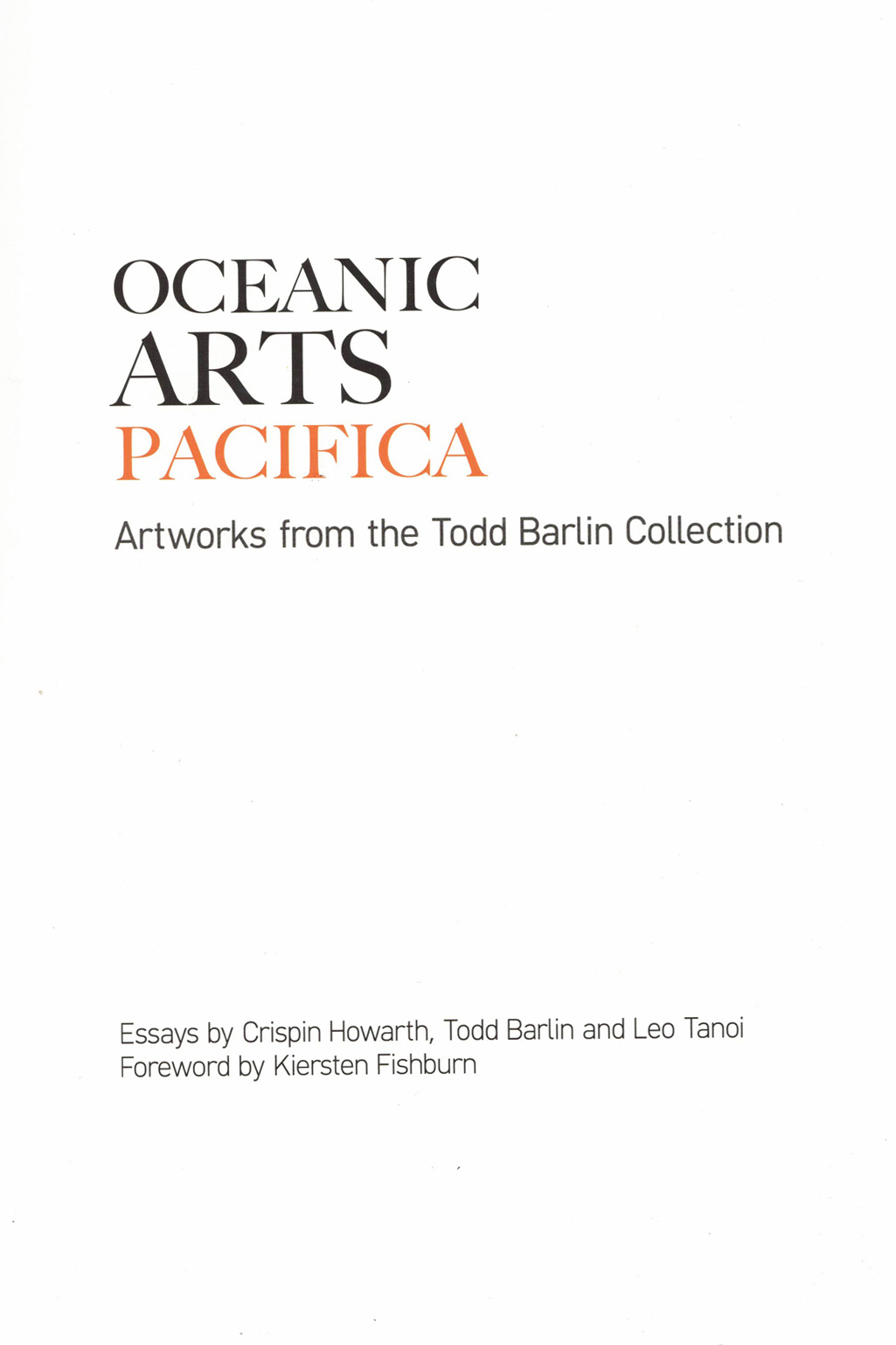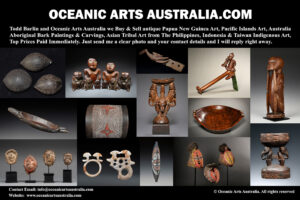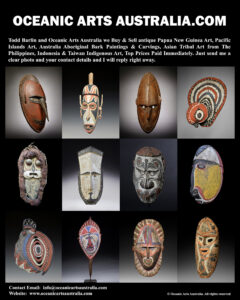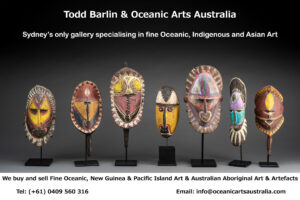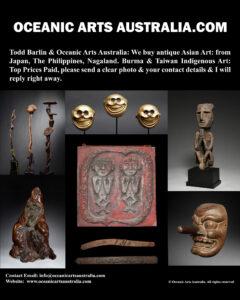A Superb Collection of Antique Kris Sword Handles Indonesia 18th -19th Century
| Collection No. | Coll - Kris |
|---|---|
| Size | 8-12cm |
A Superb Collection of 20 Antique Kris Sword Handles or Hulu from Indonesia dating from the 18th -19th Century
This collection of 20 antique Indonesian Kris Handles (three are actually Betel Knife Handles) was collected over 40 years, many were acquired from the well-regarded Indonesian Art Dealer Daeng Iskander, who had put together a part of the Barbier Mueller Collection of Indonesian Art now in The Musee du Quai Branly in Paris France. These miniatures masterpieces of art when placed together as a collection are amazing to look at and fantastic to hold in your hand.
Each Kris Handle has such great detail & artistry and the old patina shows long handling & use.
Provenance: Daeng Iskander Collection Bali, The Todd Barlin Collection & The Elizabeth Pryce Collections
Kris has been produced in many regions of Indonesia for centuries, but nowhere is the Kris so embedded in a mutually-connected whole of ritual prescriptions and acts, ceremonies, mythical backgrounds, and epic poetry as in Central Java.
A Kris can be divided into three parts: blade (bilah or wilah), hilt (hulu), and sheath (warangka). These parts of the Kris are objects of art, often carved in meticulous detail and made from various materials: metal, precious or rare types of wood.
Both a weapon and spiritual object, Kris are often considered to have an essence or presence, considered to possess magical powers, with some blades possessing good luck and others possessing bad. Kris are used for display, as talismans with magical powers, weapons, sanctified heirlooms (pusaka), auxiliary equipment for court soldiers, an accessory for ceremonial dress, an indicator of social status, a symbol of heroism, etc.
Legendary Kris that possess supernatural power and extraordinary ability were mentioned in traditional folktales, such as those of Empu Gandring, Taming Sari, and Setan Kober.
The history of Kris is generally traced through the study of carvings and bas-relief panels found in Southeast Asia. It is believed that the earliest Kris prototype can be traced to Dongson bronze culture in Vietnam circa 300 BC that spread to other parts of Southeast Asia. Another theory is that the Kris was based on daggers from India. Some of the most famous renderings of a Kris appear on the bas-reliefs of Borobudur and Prambanan temple.
According to traditional Javanese kejawen, Kris contains all the intrinsic elements of nature: tirta (water), bayu (wind), agni (fire), bantolo (earth, but also interpreted as metal or wood which both come from the earth), and aku (lit: “I” or “me”, meaning that the Kris has a spirit or soul). All these elements are present during the forging of Kris. Earth is metal forged by fire being blown by pumped wind, and water to cool down the metal. In Bali, the Kris is associated with the nāga or dragon, which also symbolizes irrigation canals, rivers, springs, wells, spouts, waterfalls and rainbows; thus, the wavy blade symbolizes the movement of the serpent. Some Kris have the head of a naga (dragon) carved near the base with the body and tail following the curves of the blade to the tip. A wavy Kris is thus a naga in motion, aggressive and alive; a straight blade is one at rest, its power dormant but ready to come into action.
The handle or hilt (hulu) is an object of art, often carved in meticulous details and made from various materials: precious rare types of wood to gold or ivory. They were often carved to resemble various animals and Hindu deities, In Bali, Kris handles are made to resemble demons coated in gold and adorned with semi-precious and precious stones, such as rubies. In Java, Kris handles are made in various types, the most common design being the abstract stylized representation of the human form.
Further reading :
• David van Duuren, The Kris; An Earthly Approach to a Cosmic Symbol. Wijk en Aalburg (The Netherlands): Pictures Publishers, 1998.
• David van Duuren, Krisses; A Critical Bibliography. Wijk en Aalburg (The Netherlands): Pictures Publishers, 2002.
• Vic Hurley; Christopher L. Harris (1 October 2010). Swish of the Kris, the Story of the Moros, Authorized and Enhanced Edition. Cerberus Corporation. ISBN 978-0-615-38242-5.
• Gardner, Gerald B., Keris and Other Malay Weapons Orchid Press; Reprint Edition 2010 ISBN 978-974-8304-29-8 (Originally printed 1936 Singapore:Progressive Publishing Company)
• W.H. Rassers, ‘On the Javanese kris’, in: Bijdragen tot de Taal-, Land- en Volkenkunde 99, 1940, pp. 377–403.
ENQUIRE HERE
To see many more rare items and the finest masterpieces, please make an appointment with us to visit the gallery.
For all inquiries, please contact us.

